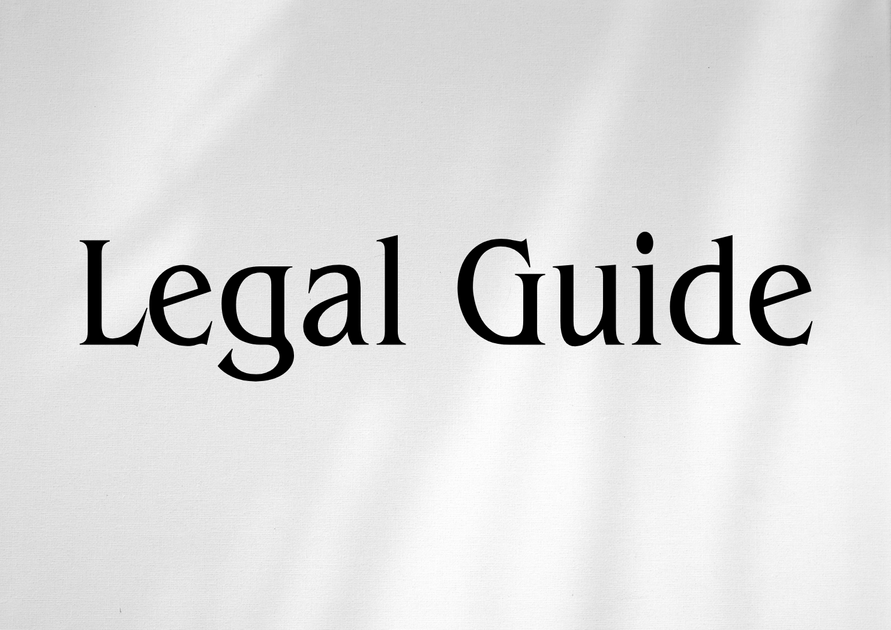Introduction: AI’s Rise in the Legal Arena and Its Relevance for UAE Stakeholders
The integration of Artificial Intelligence (AI) into the legal profession is redefining traditional notions of legal service provision and regulatory compliance worldwide. Nowhere is this transformation more pronounced than in the United States, where rapid technological advancements are reshaping legal workflows and raising complex compliance considerations. For UAE-based businesses, law firms, in-house legal teams, and government entities interacting with US partners or operations, understanding the legal intricacies arising from AI-driven legal automation is not just a competitive advantage—it is increasingly essential for proactive compliance and risk management.
Recent updates from UAE authorities—such as the UAE Cabinet’s initiatives for AI governance, new Federal Decrees emphasizing data and technology risk management, and the Ministry of Justice’s continuous legal reforms—highlight how the nation is moving swiftly to align with international best practices. For executives, HR managers, and compliance officers, gaining insight into the compliance landscape of US legal tech adoption offers strategic value: it helps anticipate regulatory expectations, mitigate international exposure, and design future-proof compliance strategies within the UAE framework.
This article provides an in-depth consultancy-grade analysis of AI’s transformative role in US legal practice, unpacking US statutory provisions, risk areas, practical examples relevant to UAE interests, and compliance strategies grounded in both US and UAE regulatory perspectives.
Table of Contents
- AI and the US Legal System: The Current Landscape
- Key Laws and Regulatory Frameworks Governing AI in US Legal Practice
- Comparing Traditional and Contemporary Legal Regulations in AI Context
- Opportunities in Legal Automation for UAE-Linked Businesses
- Primary Compliance Risks in US AI Legal Automation
- Case Studies: US AI Adoption and Lessons for UAE Stakeholders
- Strategic Recommendations for UAE Entities Engaging with US Legal Tech
- Conclusion and Forward Outlook
AI and the US Legal System: The Current Landscape
The Shifting Paradigm: Technology in US Legal Delivery
The US legal profession is experiencing unprecedented change as AI systems—ranging from natural language processing for contract review to predictive analytics for judicial outcomes—enter mainstream law firm operations and corporate legal departments. According to the American Bar Association (ABA) and the 2023 Legal Technology Survey, over 45% of large US law firms now incorporate some form of AI in document review, e-discovery, and compliance monitoring.
Why UAE Stakeholders Should Closely Monitor US Legal Tech Developments
For UAE-based organizations, cross-border investments, joint ventures, or supply chain partners frequently involve US legal counsel or jurisdictional exposure. Understanding how US AI-driven legal process outsourcing works—including its regulatory pitfalls—empowers UAE parties to demand appropriate due diligence, contractual warranties, and cross-border compliance measures, especially as the UAE enhances its own digital governance frameworks.
Key Laws and Regulatory Frameworks Governing AI in US Legal Practice
Overview of Core US Legal Statutes Impacting AI Automation
While the US does not currently have AI-specific federal legislation akin to the European Union’s AI Act, several statutory and regulatory frameworks have considerable impact on the use of AI in legal practice. The most relevant are:
- American Bar Association (ABA) Model Rules of Professional Conduct: Mandate attorney competence, confidentiality, client communication, and ethical obligations—now interpreted to extend to AI tool usage.
- Federal Trade Commission (FTC) Act (15 U.S.C. § 41 et seq.): Prohibits deceptive or unfair business practices, extending to automated legal service technologies and consumer-facing AI legalbots.
- Gramm-Leach-Bliley Act (GLBA): Protects consumer financial information, directly relevant for AI in legal functions overlapping financial services.
- California Consumer Privacy Act (CCPA) & California Privacy Rights Act (CPRA): Enforce privacy rights and data security obligations, affecting any law firm operating in California or handling Californian client information.
- State Professional Conduct Rules and Court Opinions: Many states have updated their ethics rules and issued opinions on the permissible use of AI by attorneys and paralegals.
On 30 April 2024, the US Department of Justice announced the formation of an AI Task Force to oversee AI’s deployment in federal agencies and legal proceedings, which is anticipated to steer further regulatory developments.
Guidelines and Responsible AI Use
Both the ABA and various state bar associations have published formal guidance on lawyers’ responsibilities when using AI-enabled tools. For example, ABA Formal Opinion 498 (2021) emphasizes the need for “reasonable efforts” to ensure AI tools are accurate and secure.
Comparing Traditional and Contemporary Legal Regulations in AI Context
To understand compliance obligations, it is vital to contrast prior regulatory expectations with new guidelines reflecting the realities of AI-powered practice.
| Aspect | Traditional Requirements | Contemporary (AI-Era) Updates |
|---|---|---|
| Attorney Competence | General obligation to be knowledgeable and diligent (ABA Rule 1.1) | Explicit requirement for technological competence; duty to monitor accuracy of AI tools (ABA Formal Opinion 498) |
| Confidentiality | Safeguard ‘client confidences’ via physical and traditional digital security (ABA Rule 1.6) | Need for robust cybersecurity in AI systems; assessment of vendor AI risk (ABA, CCPA/CPRA requirements) |
| Client Communication | Reasonable communication about case status and legal strategy | Disclosure when AI tools are used in client work and warnings of potential limitations (ABA and State Bar opinions) |
| Supervision | Supervise junior lawyers/staff | Duty extends to overseeing technical AI outputs and preventing over-reliance (Model Rule 5.3, 5.1) |
Opportunities in Legal Automation for UAE-Linked Businesses
Streamlining Cross-Border Transactions and Due Diligence
For UAE entities involved in cross-border M&A, joint ventures, or intellectual property litigation in US jurisdictions, AI-powered contract analysis, legal research, and regulatory compliance software can deliver significant time and cost efficiencies. Automated solutions can accelerate due diligence, highlight hidden liabilities, and standardize documentation across diverse jurisdictions.
- Faster onboarding of US partners or vendors.
- Reduced errors in translating regulatory requirements into operational steps.
- Improved transparency in audit and compliance reporting.
Red Flag: Jurisdictional Complications
However, automated legal workflows introduce risks: AI tools may be trained on outdated or incomplete laws, miss nuanced cross-jurisdictional issues (such as those arising under UAE Federal Decree-Law No. 34 of 2021 Concerning the Fight Against Rumors and Cybercrimes), or compromise client confidentiality if not properly vetted. UAE organizations must ensure technology aligns with both US and UAE statutory obligations, especially regarding data transfers and professional secrecy.
Primary Compliance Risks in US AI Legal Automation
1. Data Privacy and International Data Transfers
US law—particularly state-level regulations like the CCPA/CPRA—imposes strict controls on how personal data is collected, processed, and transferred, including through AI tools. For UAE enterprises, non-compliance in cross-border data sharing can trigger severe penalties, litigation, and reputational harm, particularly if US or Californian resident data is involved.
- US FTC enforcement actions may target AI tool providers or users for misleading privacy practices.
- UAE Federal Law No. 45 of 2021 on the Protection of Personal Data (PDPL) stipulates explicit consent, transparency, and localization for sensitive data—complicating direct transfers to AI solutions hosted in the US.
Suggested Table: Penalty Comparison for Data Privacy Violations
| Jurisdiction | Penalty Type | Maximum Fine |
|---|---|---|
| United States (CCPA/CPRA) | Civil, statutory damages | Up to USD 7,500 per intentional violation |
| UAE (PDPL) | Administrative sanctions | Up to AED 5,000,000 (as per Cabinet Resolution No. 83 of 2022) |
2. Ethics and Unauthorized Practice of Law (UPL)
Legal automation’s ability to replicate or replace traditional attorney functions has sparked concerns about the unauthorized practice of law. In the US, regulators may fine or bar law firms—or even non-lawyer technology vendors—if they provide legal services without requisite qualifications.
Recent cases, such as the New York State Bar Association’s scrutiny of non-attorney AI legal advice platforms (2023), are a reminder: both technology providers and their clients must implement rigorous supervision and clearly delineate the boundary between permitted automation and protected legal advisory work.
3. Algorithmic Bias and Discriminatory Outcomes
AI tools—particularly in employment law and litigation—can inadvertently embed bias, resulting in unlawful discriminatory outcomes. US law (such as Title VII of the Civil Rights Act and state anti-discrimination statutes) can hold law firms or corporate users liable for algorithmically produced disparities, such as those negatively impacting protected classes.
4. Malpractice and Professional Negligence
Automated legal reasoning tools may provide incorrect or incomplete results—especially in contracts, regulatory filings, or due diligence. If a UAE business suffers harm due to flawed outputs from a US law firm’s AI system, complex malpractice claims may ensue, with cross-border disputes on governing law and liability.
5. Cybersecurity Weaknesses and Vendor Risk
Extensive reliance on cloud-based AI legal solutions increases exposure to cyber threats. Compliance failures, data breaches, or ransomware attacks involving client legal documents could result in dual liabilities under both US and UAE data protection regimes.
Case Studies: US AI Adoption and Lessons for UAE Stakeholders
Case Study 1: Contract Review Gone Awry
Scenario: A UAE entity outsources its cross-border financing deal due diligence to a US law firm using AI-powered contract analysis. The AI tool fails to flag a change-of-control clause highly material under UAE Civil Transactions Law (Federal Law No. 5 of 1985). Ultimately, the oversight leads to unexpected financial complications during a merger, sparking disputes and reputational fallout.
Lesson: Technology supplementation is not a substitute for specialized legal insight, especially where local law nuance matters. UAE entities should demand human attorney review of AI outputs and specify cross-jurisdictional legal oversight in engagement letters.
Case Study 2: Privacy Breach via Automated E-Discovery
Scenario: A US law firm conducting e-discovery for litigation involving a UAE multinational uses an AI tool storing documents in a US-based data center. The documents include personal employee data, triggering both CCPA and UAE PDPL notification and consent requirements.
Lesson: Cross-border data transfers must comply with the stricter of applicable US or UAE laws. Incorporate explicit cross-jurisdictional privacy clauses, obtain clear client approvals, and ensure technical safeguards align with UAE Cabinet Resolution No. 56 of 2022 concerning personal data transfer mechanisms.
Case Study 3: Algorithmic Bias in Employment Litigation
Scenario: An AI-driven platform deployed for employment discrimination analysis in US litigation misses subtle instances of indirect discrimination recognizable under UAE anti-discrimination statutes (Federal Decree-Law No. 2 of 2015).
Lesson: AI must be trained on data sets reflecting relevant legal standards, not just US-centric algorithms. Dual jurisdictional oversight boards can help avoid adverse cross-border liabilities for UAE companies active in US disputes.
Strategic Recommendations for UAE Entities Engaging with US Legal Tech
1. Legal Due Diligence and Vendor Risk Assessment
Mandate comprehensive vetting (“Know Your Vendor” protocols) for any legal automation providers used by US legal counsel or in external legal process outsourcing. Review:
- AI model training sources and legal data coverage (are UAE laws considered?).
- Regulatory compliance certifications (e.g., ISO/IEC 27001 for data security).
Consider incorporating a vendor risk management checklist. (Suggested Visual: Compliance Checklist for Legal AI Vendor Selection)
2. Policy Alignment and Contractual Safeguards
Insist on inclusion of:
- Clear AI tool usage disclosures in engagement letters.
- Clauses mandating compliance with both US and UAE laws, including data localization where required.
- Indemnities for privacy breaches or algorithmic errors.
3. Continuous Training and Awareness
Require ongoing upskilling of in-house and external counsel on evolving AI-related professional conduct rules in the US. Leverage CPD programs aligned with UAE Ministry of Justice guidance (e.g., knowledge sessions under the Legal Professions Organization Law 2023).
4. Cross-Jurisdictional Data Governance
Adopt data minimization, encryption, and audit trail protocols to ensure legally compliant handling of personal data. Refer to UAE Federal Law No. 45 of 2021 (PDPL) for mandatory cross-border transfer controls, and insist that US partners adhere to UAE-approved safeguards in data processing agreements.
5. Supervision and Quality Control
Ensure a robust chain of human legal oversight in all automated workflows, in line with ABA Model Rules, to guard against machine-only errors. UAE compliance officers should implement random sampling audits and require post-AI review signoffs for all high-stakes legal deliverables involving US law firms.
6. Incident Response and Breach Disclosure
Formalize incident response plans covering both US and UAE reporting thresholds for data breaches, privacy violations, and technology malfunctions. Pre-plan for coordinated regulatory notifications with local counsel on both sides.
Conclusion and Forward Outlook
The accelerating adoption of AI-powered automation is transforming the practice of law in the United States and rapidly influencing international legal compliance landscapes—including those of the UAE. As US law firms integrate machine learning, predictive analytics, and automated workflows, the resulting operational gains are substantial, but the compliance risks are equally profound. The evolving interplay between US statutes, state bar guidance, and UAE legal updates (such as the 2025 UAE law reforms and enhanced data protection decrees) is creating a complex regulatory environment for cross-border business and legal services.
For UAE-based executives, legal practitioners, and compliance leaders, the imperative is clear: proactive risk assessment, ongoing review of legal automation practices, and a commitment to harmonizing international compliance protocols are vital to mitigate exposure to fines, litigation, or reputational damage. Best practices include: mandating rigorous legal technology due diligence, embedding cross-border contractual safeguards, sustaining continuous professional education, and leveraging guidance from UAE authorities (Ministry of Justice, Cabinet Resolutions, Federal Legal Gazette) as benchmarks for international legal compliance.
Looking ahead, the intersection of AI and legal practice will be governed not only by the speed of technological innovation, but also by the depth of regulatory engagement across jurisdictions. By staying informed and driving compliance innovation, UAE organizations can continue to thrive in a digitized, interconnected global legal marketplace.




